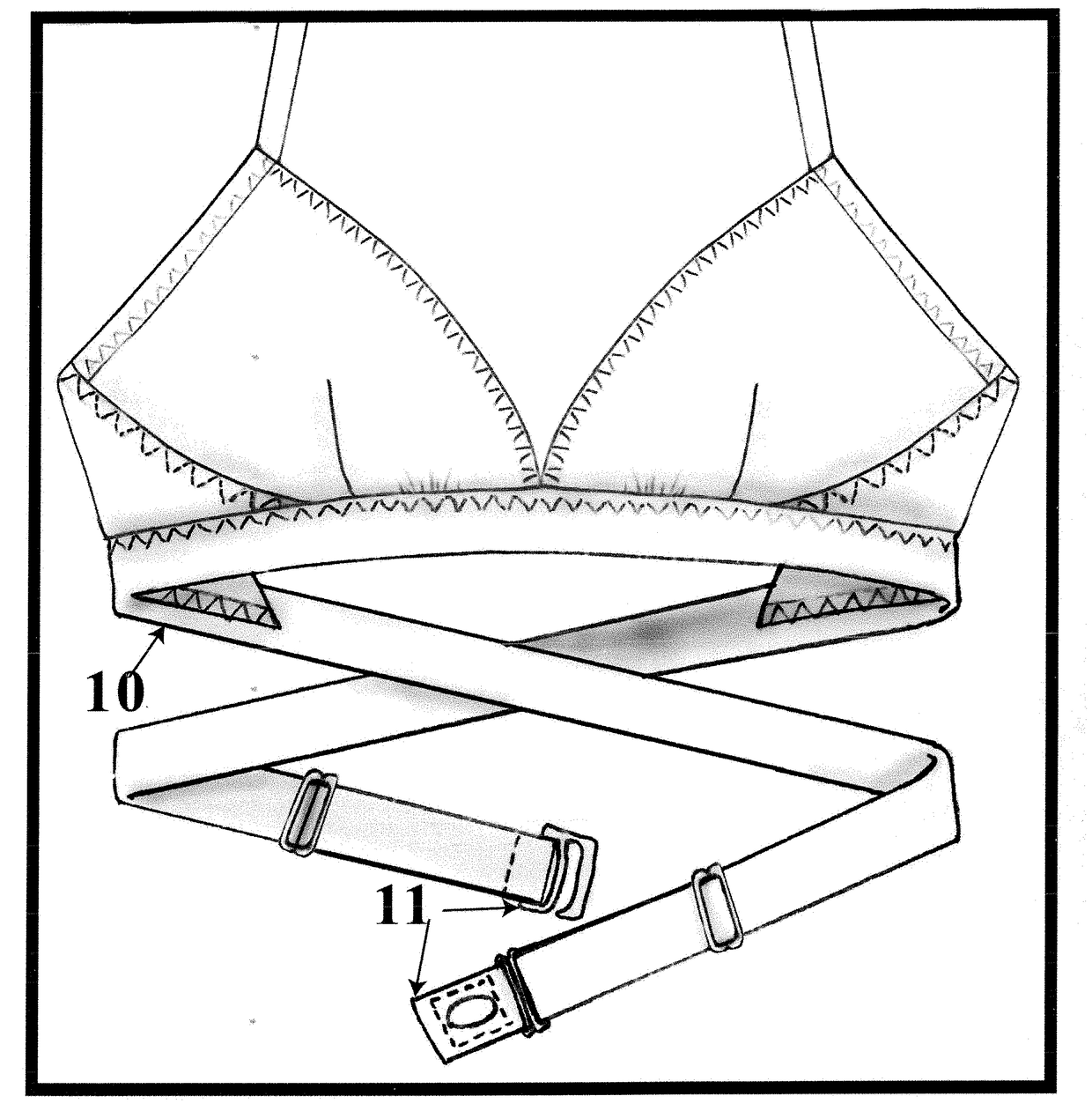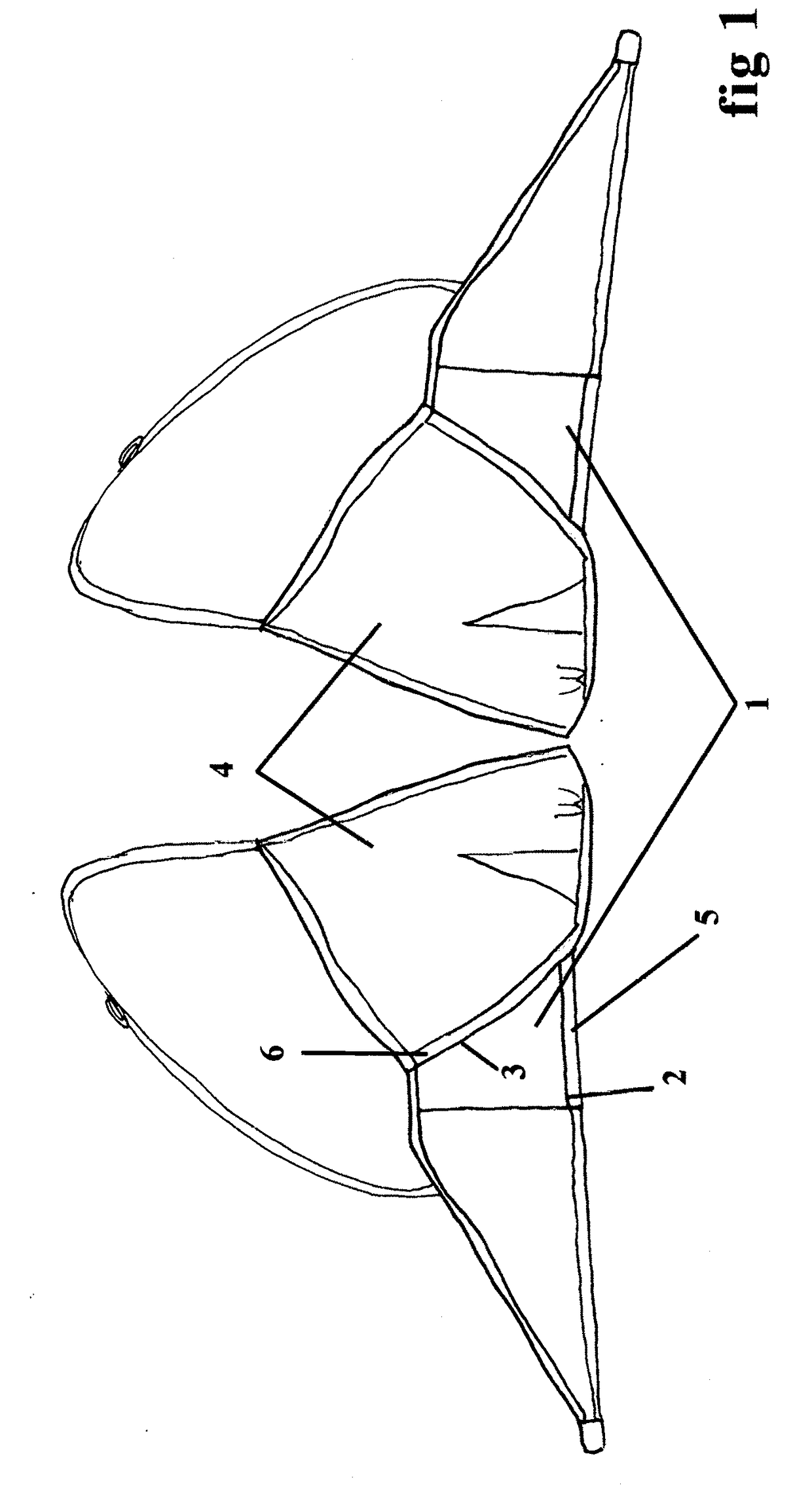However, even the most advanced underwire presents plenty of problems—bending and warping with time, poking and in some cases injuring the wearer by coming loose at the centerfront gore (1c) or sideseam (1d) near the armpit, ripping and damaging the garment, and generally inducing discomfort and fit problems.
The problem is compounded the larger a wearer's breasts are, due to the added weight and stress upon support components.
While the support level afforded by underwire is difficult to parallel, most women find it uncomfortable to wear over an entire day, and over extended periods of time, as the structure can wear through fabric, warp its shape, and create a number of fit issues, discomforts, and even injuries, due to the rigidity of the support structure.
However, the variance of this
structural component, when paired with the rigidity of its support structure and the varied
anatomy of its possible wearers, can preclude wearers from achieving a proper fit from the bra.
However, the basic problems involving the rigidity of wires can affect the implementation of these channels, and still make
sizing and manufacturing a more difficult process.
This makes production of those styles either contribute to widespread discomfort for buyers subject to improperly sized or proportioned wires, may
restrict the design possibilities afforded by the proportions of the wires, or may increase manufacturing and production costs as a wider variance of sizes and shapes may require more physical wires specifically created for each size.
However, because of the different strategies of construction used, they often fail to account for providing support against different directions of gravity and motion.
This is counterproductive on multiple levels.
Without cup definition, breasts may settle improperly, slip out of elastic boundaries of the band, or may just move in a way that is distracting, painful, or annoying to the wearer as the wearer performs normal, everyday tasks such as walking or raising their arms.
In general, the support level is inadequate, in particular for wearers who have more than a four inch difference between the circumference of their
torso underneath the breast (the “underbust”) and the measurement around the fullest part of their breasts (the “bust”)—these wearers require “full cup” support.
Therefore, the style may only contain breasts in a slight upward direction from the
single line of underbust elastic, leaving the cup inflexible and depriving customers of adequate side support, regardless of how roomy the cups are.
Some bralette styles, including longline styles, may attempt to add boning at the side seam to provide greater band support, or add a line of straight side seam elastic applied in such a way that it is perpendicular to the band (2.2) However, the lack of curved seaming and the lack of dynamic stretch-to-fit techniques (such as the one outlined in this patent) applied throughout the elastic structure again brings the issue back to a lack of proper cup definition, which undermines adequate security during daily activities, and once again the wearer is missing out on important
diagonal support, which provides adequate shaping.
However, without additional elastics along the cup edge, the seaming provides inadequate support in relation to other elastic-supported areas throughout the structure of the garment.
Without elastic on the boundaries of the full cup edge, and without added cup projection, this style of construction provides an inadequate and inappropriate support level for most cups above a 32D & its sister sizes, and little support to smaller sizes.
However, these soft bras & bralettes aren't available or practical to most women.
They're often sized using “small / medium / large”
sizing, which does not account for the differences between underbust size and bust volume in the way most traditional bra sizes do.
This method does not utilize the technique of “stretching” an elastic to “fit” a garment.
This is an additional problem with the construction methods traditionally in usage today, and another reason why women need alternate solutions.
 Login to View More
Login to View More  Login to View More
Login to View More 


